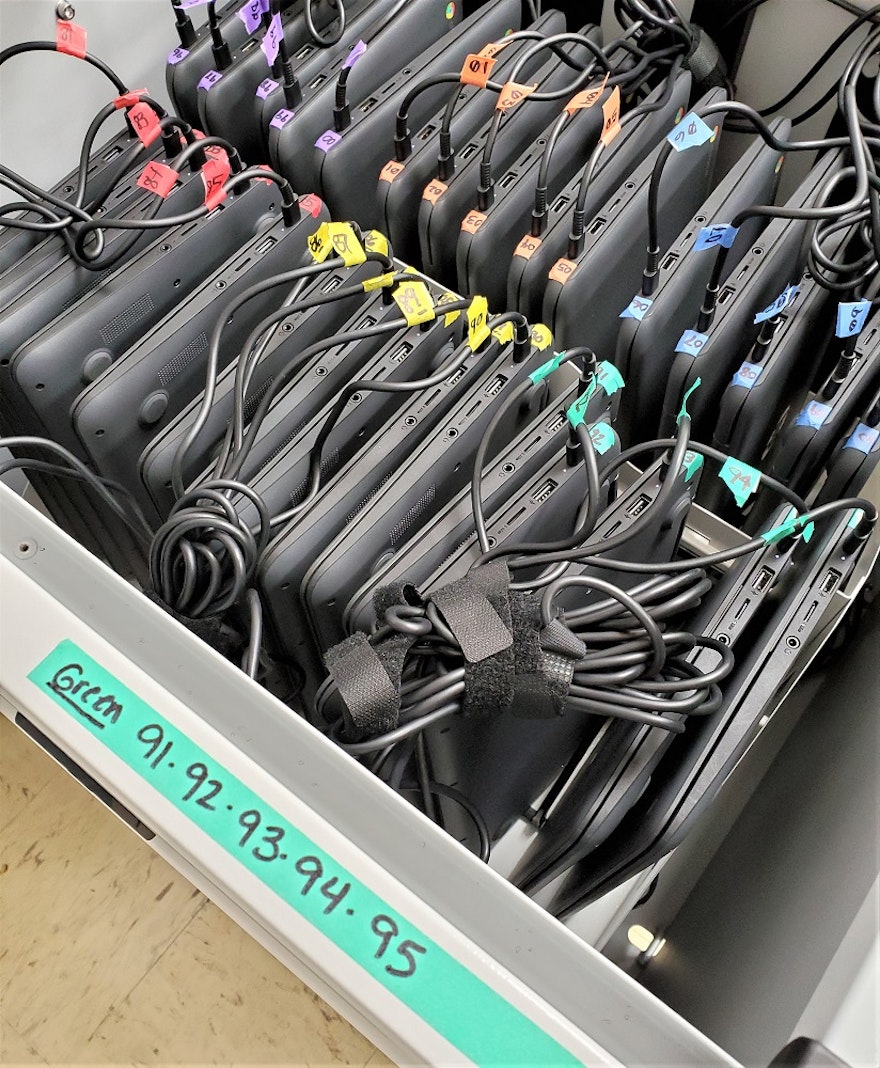Storing Chromebooks long term - Best practices
Storing Chromebooks for the long term is an initial requirement when a school year comes to an end. You might be wondering how to deal with a myriad of Chromebooks with dead batteries. Here we have shared the Google recommended steps to prepare your Chromebook inventory for storage over long periods. Following these steps will help avoid charging or battery-related issues when the Chromebooks are put back into service.
Best practices prior to long-term storage:
Update to the latest version of the Chrome OS and charge your Chromebooks so that the battery is at least 80% full. This particular step will keep your device charged even when the battery discharges when you unplug it over the summer.
Wondering how to slow down the battery discharge rate during storage? Instead of removing the battery from the Chromebook device, take the following steps.
- Use a charger to charge the device. Make sure you are using the right charger and connecting it to the right port to charge Chromebooks properly.
- Hold both the Refresh and Power buttons at the same time to switch off the device.
- While you press and hold these keys together, remove the power cable from the device and slowly release the keys. This will turn off your device and make sure it remains off until school resumes.
- Take an attempt to power the unit on using the power button. If the Chromebook does not power on, it implies you have successfully completed the steps and can safely store the system for the long term. Else, you should repeat steps 2 to 4.
If you have the least idea about storing your Chromebooks, the aforesaid steps will certainly help you out with the concern. Indeed, these are the ideal steps. Moreover, by following these steps you can reduce battery discharge, prevent constant charging, extend battery life, and eventually keep your Chromebook in a stable condition.
Redeploying Chromebooks:
Now that it's clear how to store Chromebooks for the long term, the immediate question that arises is how to get these devices ready for school. Take a look at the following steps for a better understanding.
Connect Chromebooks to both a charger and a power source to get the battery out of the disconnected state. This will power up the devices.
Once, Chromebooks start off, connect these devices to WiFi and update them to the latest Chrome OS release.
Updating Chromebooks takes some time, as multiple Chrome OS versions may have been released since the last time the device was updated.
Google provides additional communication related to the storing process which can be found here: https://support.google.com/chrome/a/answer/9139543.
More other information can be found under the Dell knowledge base article, SLN308522, via the following link: https://www.dell.com/support/article/us/en/19/sln308522
Dell provides a standard one-year warranty on batteries. Failure to follow the steps provided above could cause your batteries to reach a critically low charge when the device is stored for long periods of time and could result in permanent failure of the battery.
Why Chromebooks are important to restore?
Chromebooks are the most effective tools that facilitate new-age education. These are primarily used to store student work, and applications, and simultaneously allow teachers to conduct distance learning productively.
A few Chromebook features that have encouraged end users to count on these devices for education are as follows.
Chromebooks are designed to meet diverse student needs. For example, if a student is visually impaired, high-contrast themes and magnification are used. For deaf and hard-to-hear users, audio customization is possible. For blind users, these have compatibility with braille devices.
Ability to work offline, when users have connectivity issues.
Long-term battery usage to avoid disruption during learning.
Easy to integrate with Google services and applications.
In-built security features.
Conclusion
Chromebooks are thus considered the best e-learning device for students across the globe. Being higher in demand, education institutions often find it difficult to manage these assets. Is your asset management team facing trouble in dealing with your valuable school assets? If so, you must think about installing IT asset management software.
An asset management system will certainly keep your Chromebooks and other devices organized and well-maintained. If you are interested or have any queries, feel free to connect with us. AdminRemix will be happy to help answer your questions and set you up with a demo.
